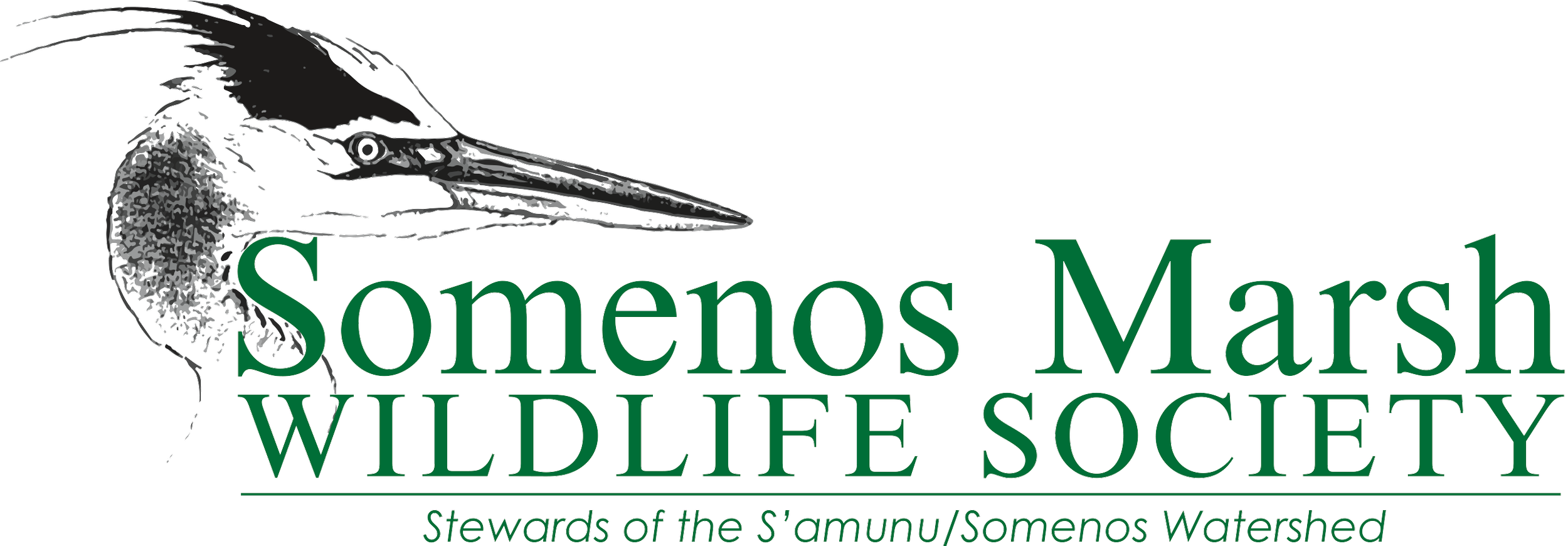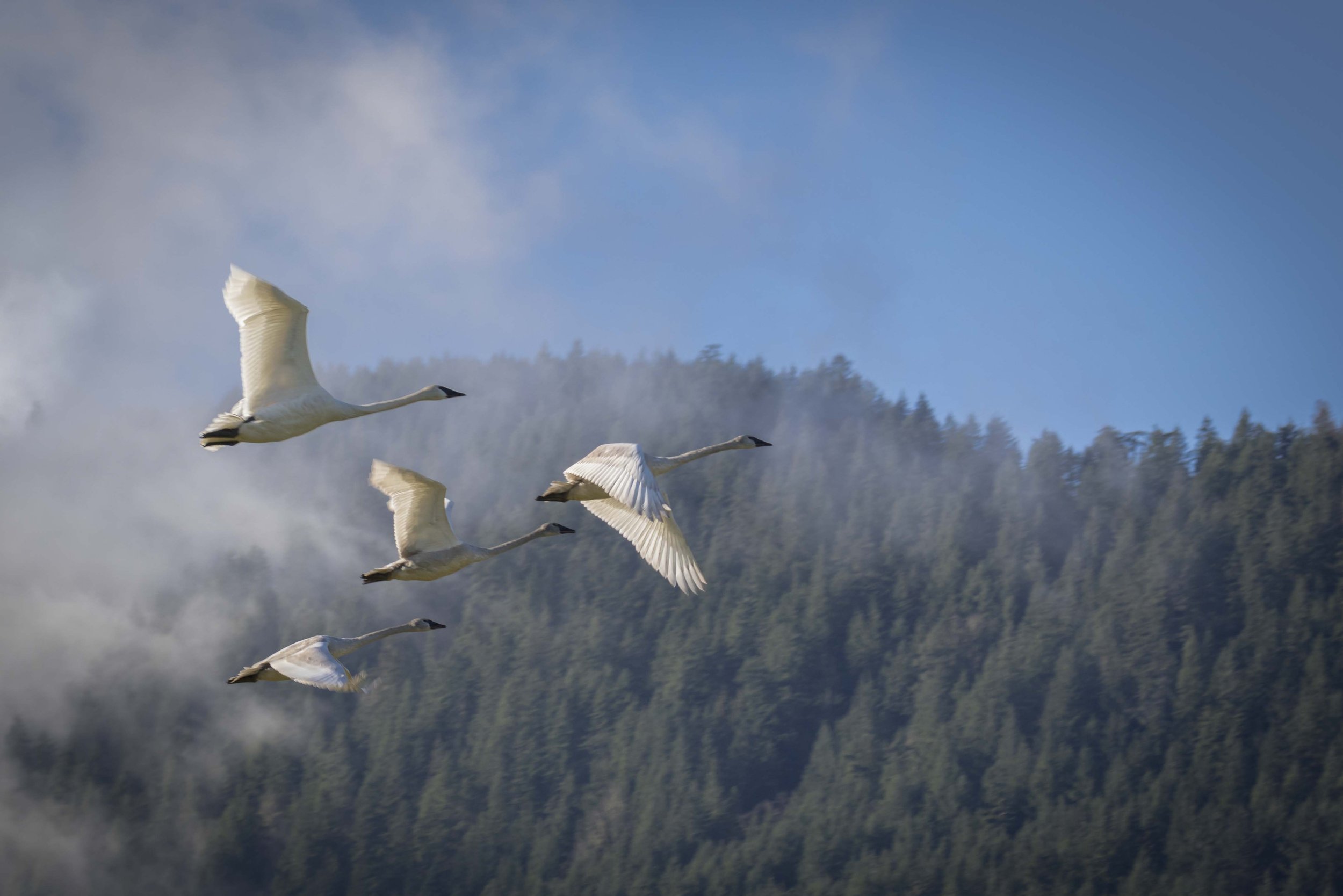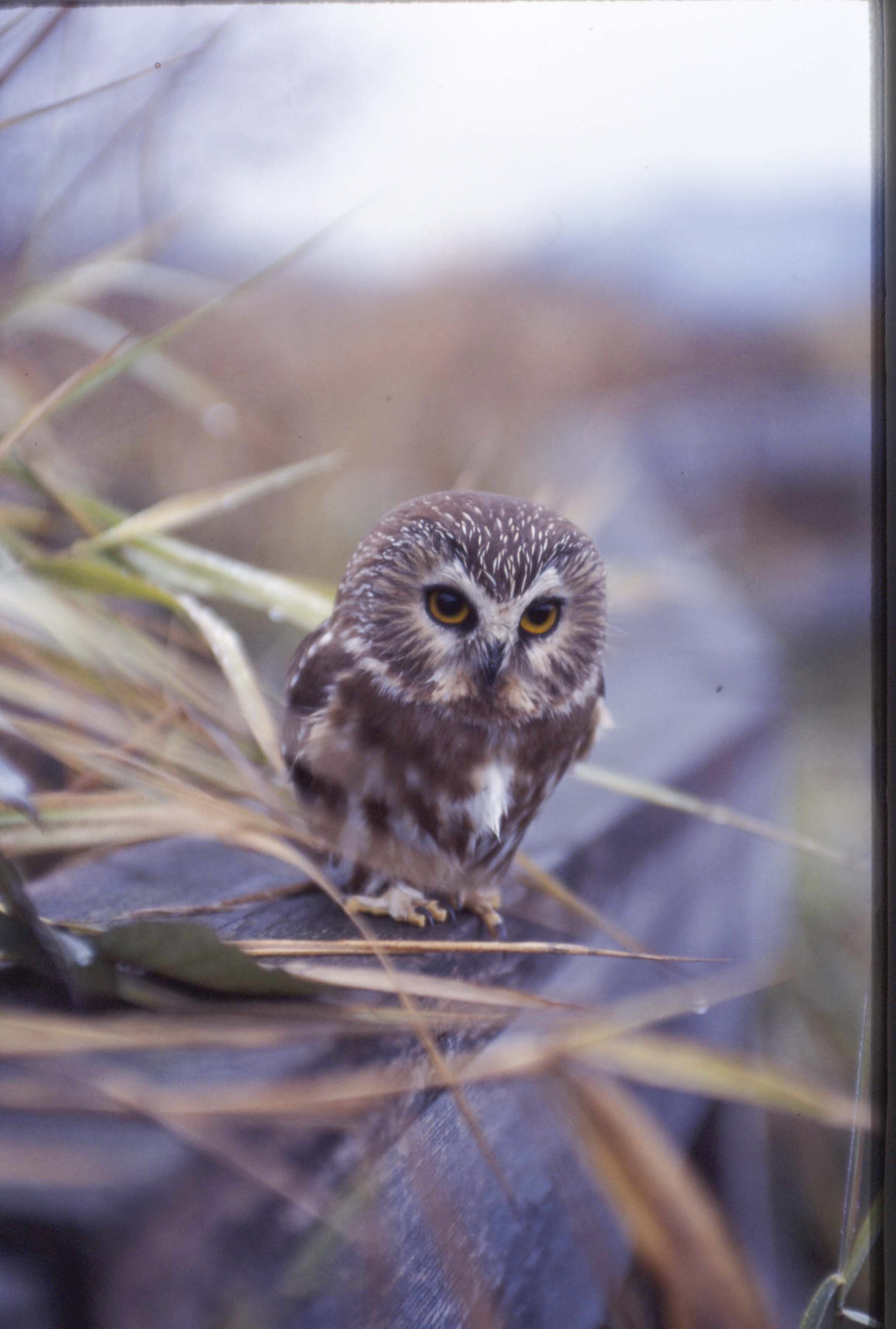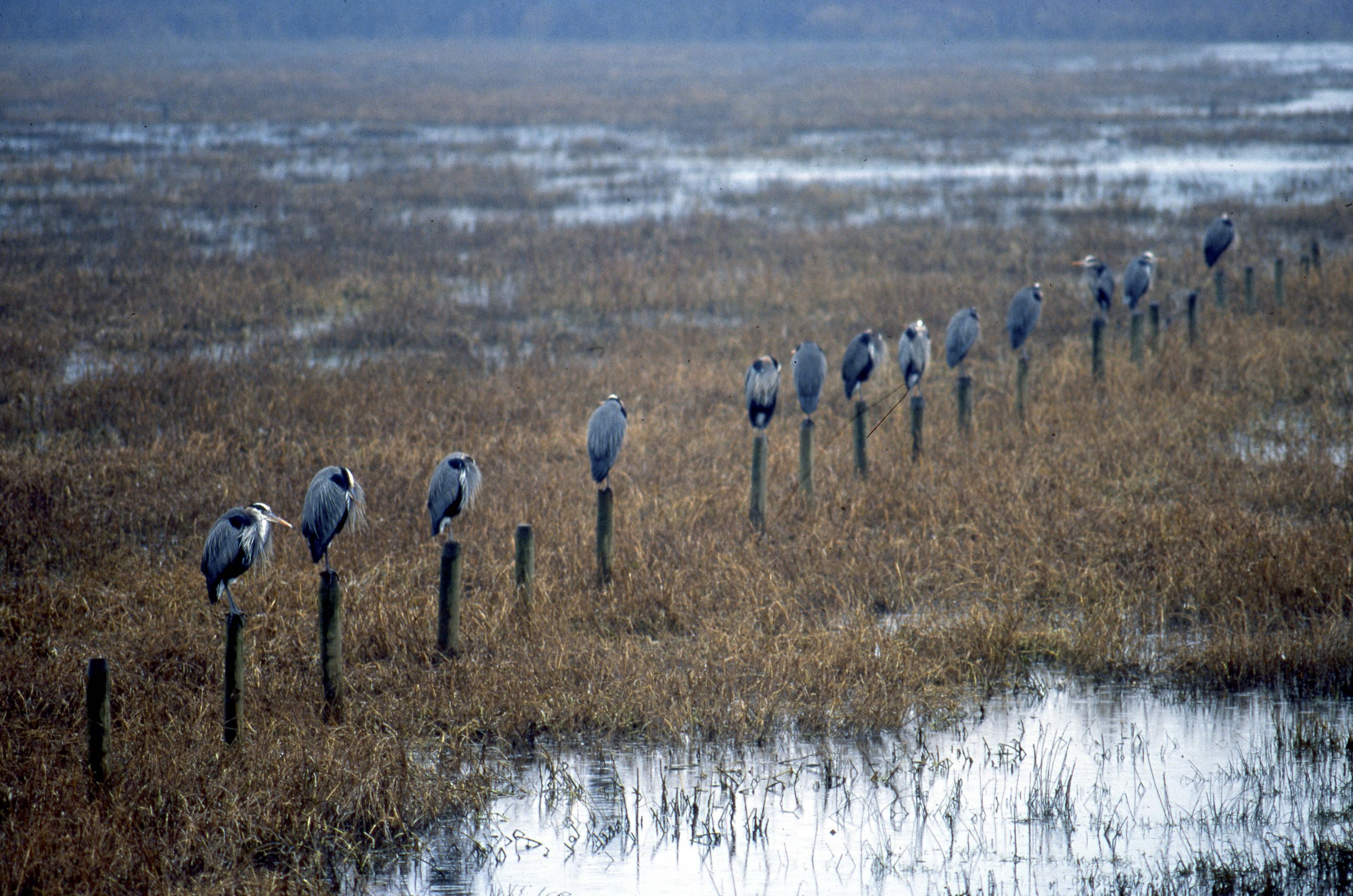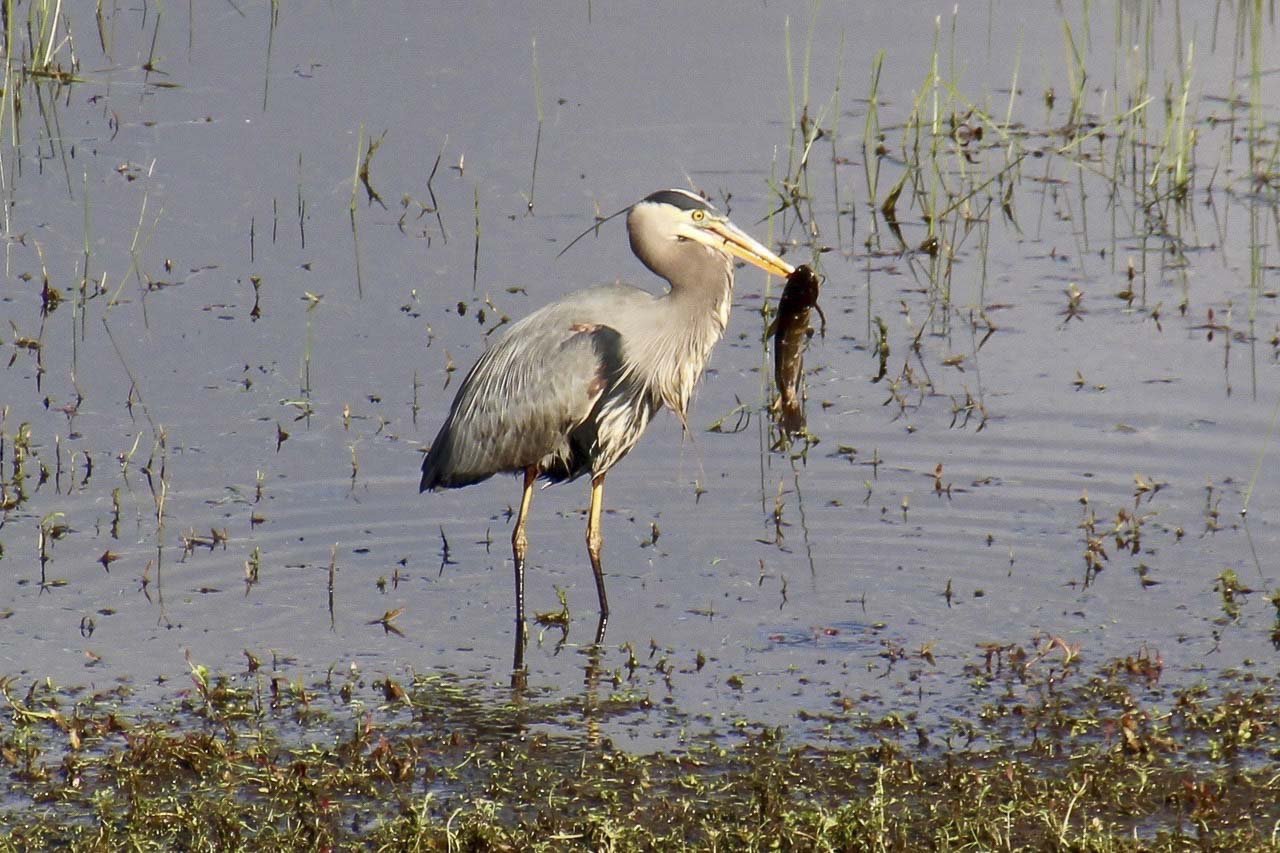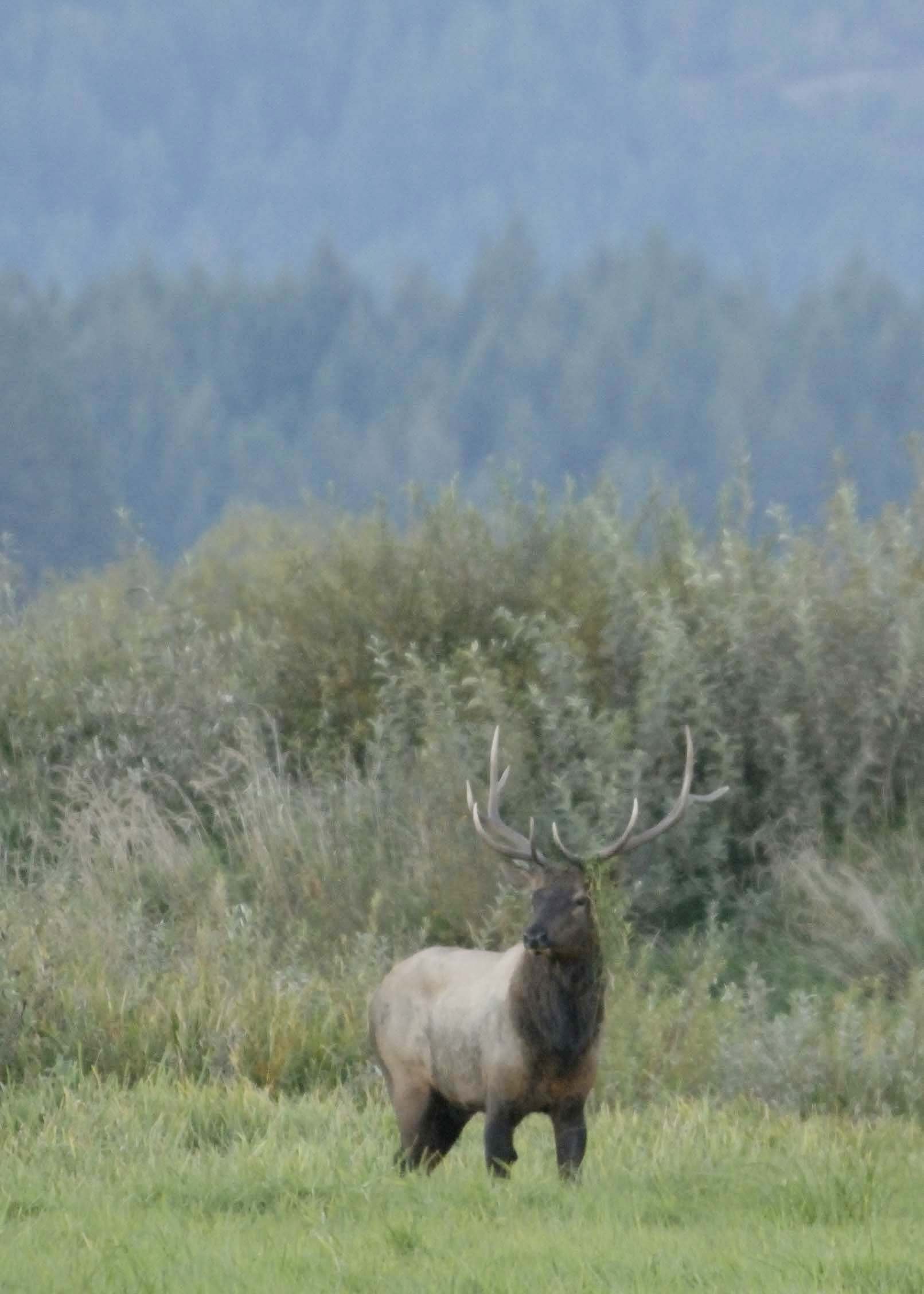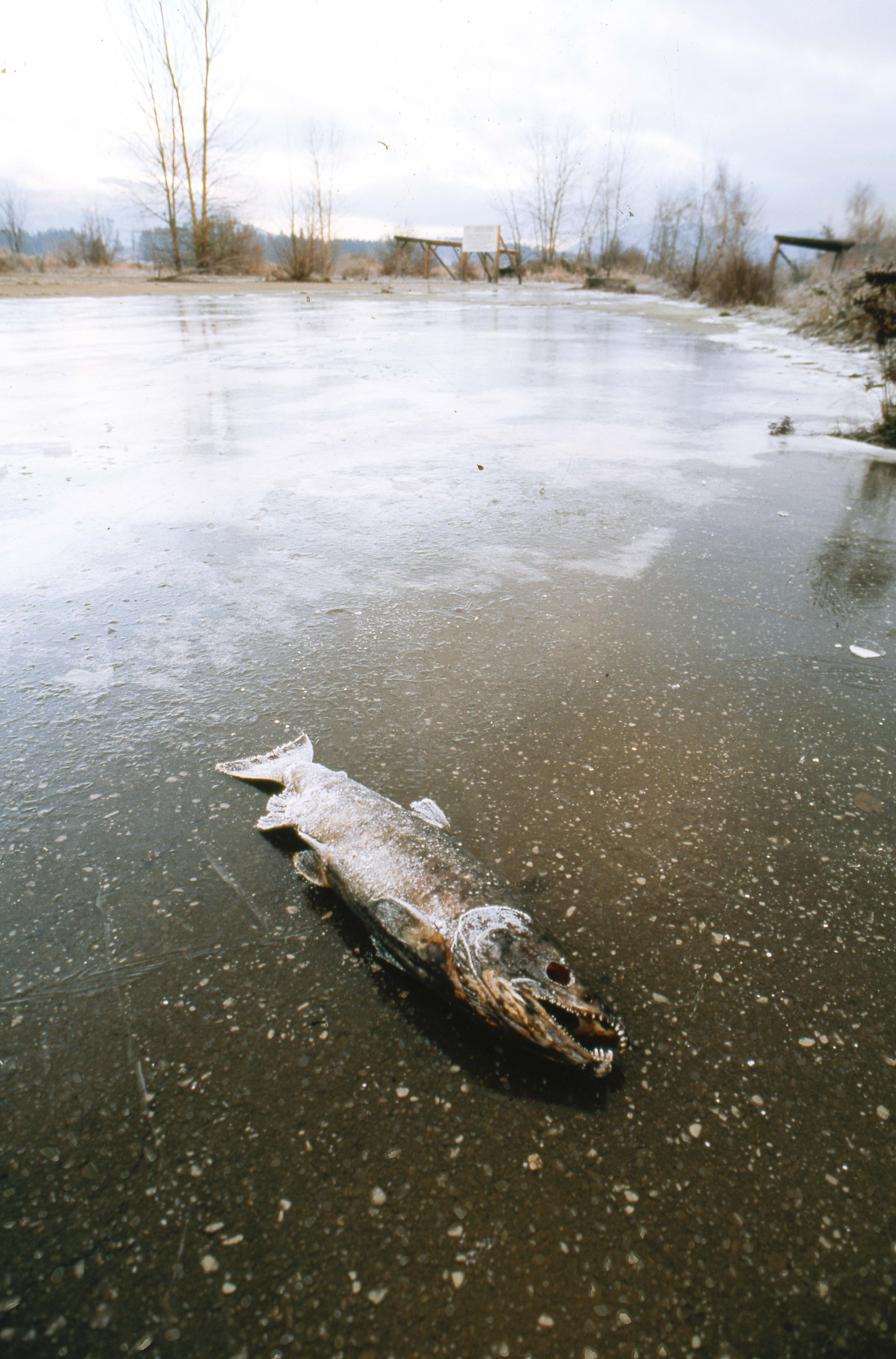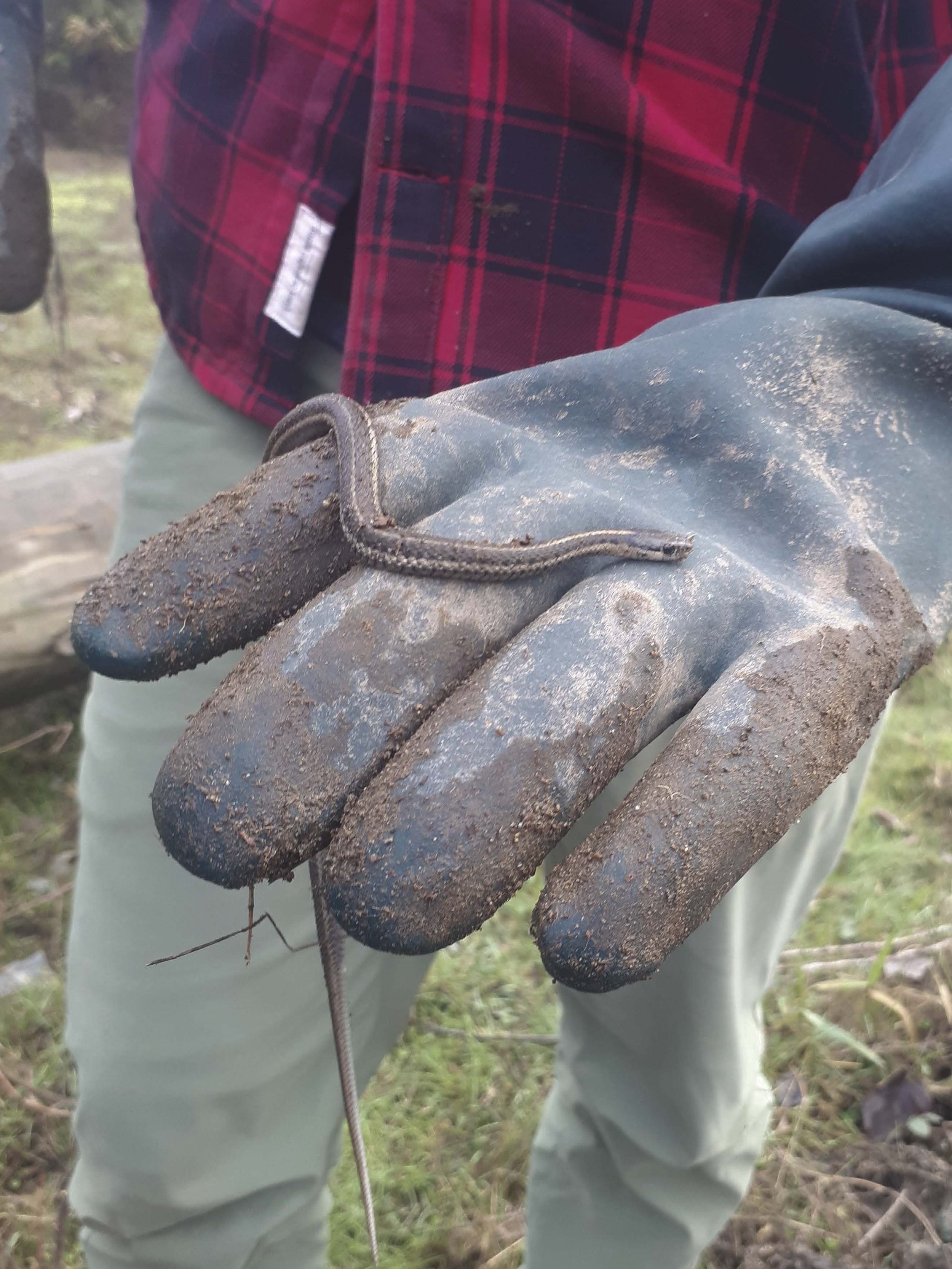Biodiversity
Fish
Coho salmon photo taken by Genevieve Singleton
The S’amunu Watershed supports important salmonids such as Coho Salmon (Oncorhynchus kisutch), Chum Salmon (O. keta), Chinook Salmon (O. tshawytscha), Rainbow Trout (O. mykiss), as well as the blue listed Coastal Cutthroat Trout (O. clarkia). Several other fish species also exist in the creeks and Somenos Lake. The table below will be updated after this season’s salmon smolt and spawning fish counts. Chinook Salmon are not mentioned in this table, but we have an oral report of Chinook being seen in the S’amunu Watershed. We are currently gathering and preparing an oral history of salmon sightings to determine historic numbers and if spawning salmon were ever able to traverse the waterfalls that limit them to the lower reaches of Bings and Averill Creek.
Historical Summary of Fish Species recorded in Somenos Watershed Waterbodies
Birds
Tree swallows photo taken by Barry Hetschko
The Somenos Marsh is home to a huge diversity of birdlife and is considered one of the best areas for birding near an urban area in British Columbia. In 2001 Somenos became designated as an Important Bird and Biodiversity Area for the Trumpeter Swans (Cygnus buccinator) who migrate to Somenos Lake and the surrounding marsh to feed on the abundant aquatic plants and seeds, and the Great Blue Heron sub species (Ardea herodias fannini) who feed in Somenos Marsh. Swans are not the only popular residents of the marsh as its diverse ecosystems attract many other water and shorebirds, swallows, birds of prey and lots of small birds that inhabit the wooded areas. 228 species have been recorded in the SCA since records have been kept. To learn more about individual species check out our educational Bird Profiles that highlights the habitat, nesting, range, diet, and conservation status of some of the S’amunu species.
Mammals
Mink photo taken by Barry Hetschko
The S’amunu Watershed is home to a rich variety of mammals, many of whom follow the stream corridors from mountain tops to the Cowichan Estuary. Larger Mammals include the Blue-listed Roosevelt Elk, Black Bears, Cougars, Wolves and Black Tailed Deer. Smaller mammals that can be regularly seen include Raccoons, Mink, Muskrat, Beaver, Rabbit, and several small rodents that are hunted but the local bird of prey population. Seals and Sea Lions have been known to journey on occasion from the Cowichan Estuary into Somenos Lake.
Plants
Sea blush photo taken by Emma Ross
The Somenos Marsh Conservation Area (SMCA) is home to a wide variety of plants. The Somenos Garry Oak Protected Area (SGOPA) bordering the Somenos Creek is just one example of the incredible botanical diversity found here. The SGOPA is an extremely sensitive ecosystem that has historically relied on fire to maintain its biodiversity. Now that fires are suppressed, the vegetation community is evolving as the taller trees and shrubs move into the space. Due to this, sensitive plant species that rely on the action of fire to stop forest succession are being out competed. Many of these plants play host to invertebrates that rely on this relationship. One study concluded that there are currently 93 species within the SMCA that are designated as being at risk in British Columbia, 24 of which are listed as either threatened or endangered worldwide. For a more in-depth look at some of our native plants that inhabit or we use in our riparian restoration efforts, check out the Plant Profiles.
Invasive Species
Parrot’s Feather photo taken by Emma Ross
Invasive species are non-native plants that can easily outcompete native plant species by quickly moving into disturbed areas and being able to rapidly colonize an area. They are usually generalists that are shade intolerant and can easily take over an area in just one season. Without natural predators these plants can grow out of control, sometimes even changing the soil chemistry to discourage native plants from growing in proximity. With our restoration work we are tackling many different invasive species; Yellow Flag Iris, Himalayan Black Berry, Reed Canary Grass, Parrot’s Feather, Purple Loosetrife, Manna grass, Scotch Broom, and Knotweed. For more information about invasive species found around the Cowichan Valley, Check out our Invasive Profiles that have detailed information about identification and management.
